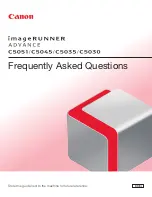
CONFIDENTIAL 6
Chapter 3: Operation Theory
Hardware
P110S Circuit Theory
The circuit of P110S contain six parts: main board, card board, LCD board, motors and sensors
wires/cables. The power is supplied by adapter and Li-ion battery. Adapter is an AC to DC power
conversion device and it provides a 90W max. 19V, DC source to drive P110S photo printer. And the
Li-ion battery is five series-one parallel (5S1P) and the capacity is 2600 mAH. The voltage of battery is
from 21V (Full) to 13.75V (cutoff). And the normal voltage of battery for printing is from 21V to 18V.
Main board transforms (step-up) adapter or battery voltage to 24V for motors driver ICs and charger IC,
and also transforms (step-down) the input voltage to TPH necessary voltage (15V +/- 5%). In the mean
time, transform input voltage to 5V and 3.3V by voltage regulators for ASIC, Memory, and the I/Os. Main
board provides a connection to thermal print head, supports both Toshiba G5004 series. To the others, CF
card socket provides an interface for CompactFlash type, including CF type I, CF type II and MicroDrive;
MultimediaCard,SecurityDisk, and MemoryStick, are integrated in 4 in 1 card socket. Card board, which
consists the driver IC for the 2.5-inch TFT-LCD panel, the user buttons, and the control circuit, is to be
the user interface(UI). The input voltage from adapter or battery and the video signal from main board are
connected to card board. Besides, the TFT-LCD panel is to display images and messages for user
operations.
Motors and sensors wires are builts to motivation provided and detected whicth based on main board
controlled.
Main Board
The circuit theory of main board will be divided into six parts.
1. ASIC Architecture
The FD2500 (code name: Nexus), the successor of FD2680 (code name: ULTIMA), is a single-chip
integrated controllerfor the dye-diffusion thermal transfer photo printer and multimedia applications
based on a turbo 8032micro-controller, a fixed-point DSP, an Image Extension (iMX) data processing
accelerator, and an intelligent print engine. The Nexus engine is specifically designed for the digital
processing of imaging applications, and the dual cores (MCU-DSP) architecture provides benefits of







































